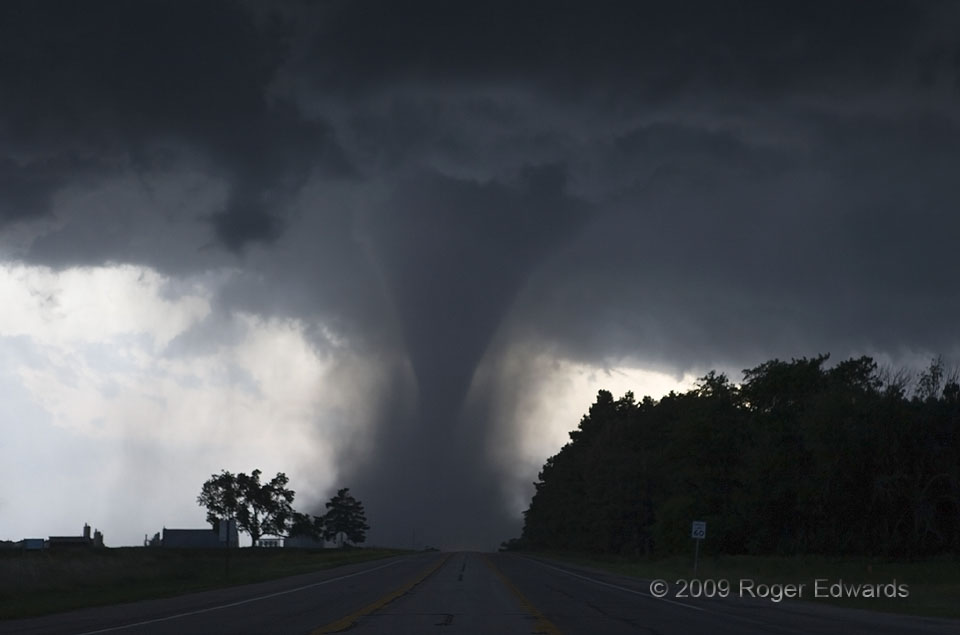

If a person wants to begin storm chasing, what should they learn or do and what should they expect?
What influenced you to make you want to chase?
What excites you the most when chasing?
When do you start planning for a chase and what steps do you take to plan out where your target will be for severe weather?
As a professional severe storms specialist, I work rotating shifts -- with different hours and different days off every week. If I am working a day shift and there are storms in the area, I have (hopefully) anticipated the possibility the day before and brought my necessary storm intercept gear to work so I can get on the road fast when my shift is over. I was able to do this with great success on 25 May 1997, one of those few occasions when the atmosphere has cooperated in close range.
If I am coming off a night shift, I must get several hours of sleep in order to drive safely and think clearly in the field. I am almost always the driver for my chase crews, so I have a serious responsibility to get enough rest. How much? As long as I had good sleep the day before, 5-6 hours will work, but only for one day. Then I can wake up in early afternoon, quickly peruse short-fuse forecasting information I already have bookmarked on the Internet, gather equipment, meet crew, and hit the road. On 3 May 1999, 4 Oct 1998 and 9 May 2016 -- three very successful tornado-intercept days, this worked splendidly.
If I am off on the severe weather day but have to work a shift the next day, I need to plan the trip around not only the severe weather forecast, but the greatest reasonable distance I can travel to get back to Norman in time for either the shift (if a night shift), or several hours' sleep that night (if a day shift).
This all assumes, of course, that I do not have a family commitment that precludes a chase altogether.
The point is that each weather situation presents the storm observer with a different preparation need. One must be flexible enough to adapt, in order to concentrate on the forecast and intercept strategy with minimal distraction.
What is the most dangerous thing you have had to deal with in storm chasing?
Who do you take on chases?
What equipment do you use to chase?

SkyPix weather and water photo galleries with stories
Image of the Week weekly blog of favorites from my portfolio
